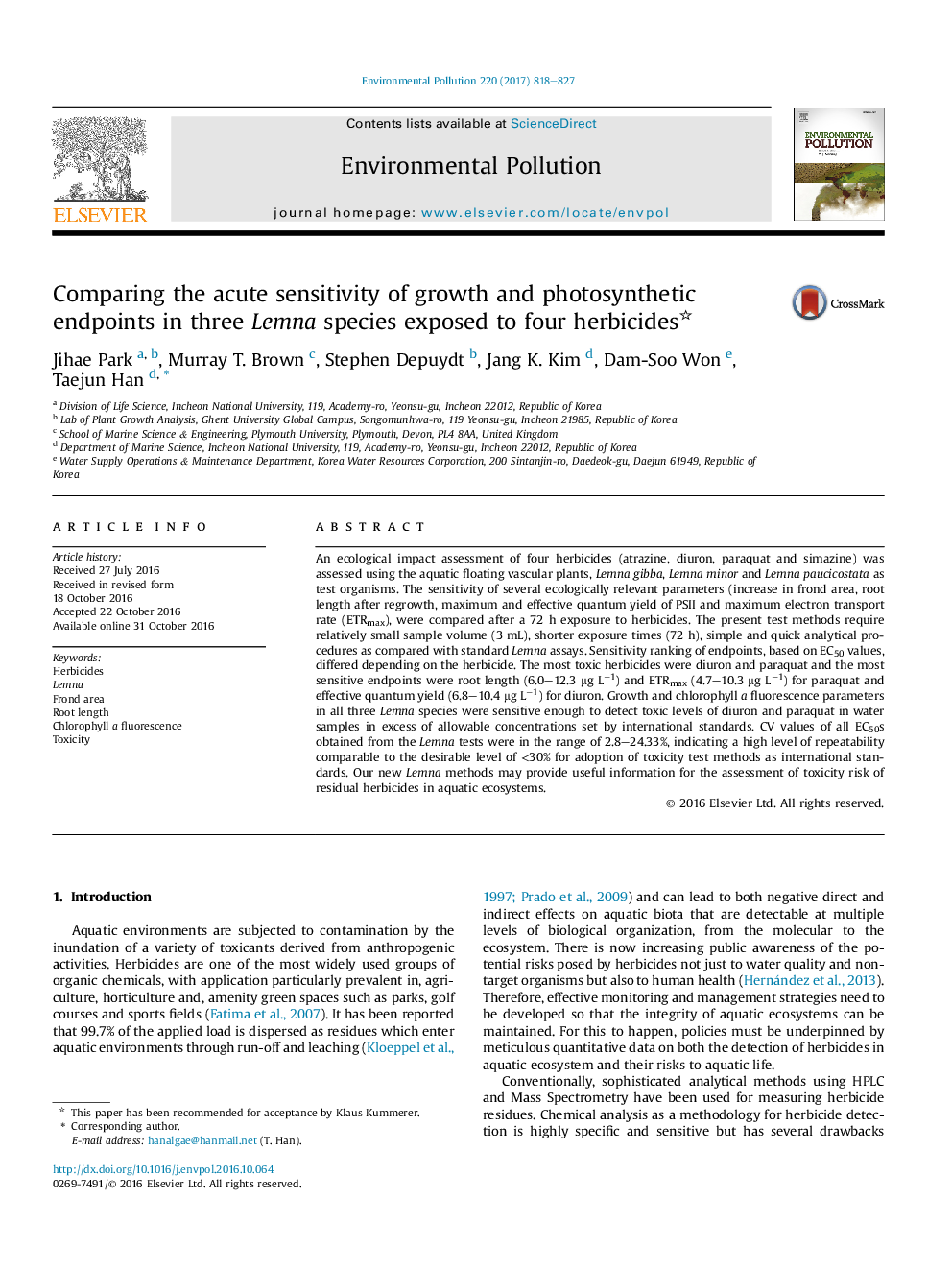| Article ID | Journal | Published Year | Pages | File Type |
|---|---|---|---|---|
| 5749509 | Environmental Pollution | 2017 | 10 Pages |
â¢An ecological impact of four herbicides (atrazine, diuron, paraquat and simazine) was assessed using Lemna gibba, Lemna minor and Lemna paucicostata with several ecologically relevant parameters (increase in frond area, root length after regrowth, maximum and effective quantum yield of PSII and maximum electron transport rate (ETRmax).â¢Based on EC50 values, the most toxic herbicides were diuron and paraquat and the most sensitive endpoints were root length (6.0-12.3 μg Lâ1) and ETRmax (4.7-10.3 μg Lâ1) for paraquat and effective quantum yield (6.8-10.4 μg Lâ1) for diuron.â¢Root re-growth and chlorophyll a fluorescence parameters in all three Lemna species were sensitive enough to detect toxic levels of diuron and paraquat in water samples in excess of allowable concentrations set by international standards.
An ecological impact assessment of four herbicides (atrazine, diuron, paraquat and simazine) was assessed using the aquatic floating vascular plants, Lemna gibba, Lemna minor and Lemna paucicostata as test organisms. The sensitivity of several ecologically relevant parameters (increase in frond area, root length after regrowth, maximum and effective quantum yield of PSII and maximum electron transport rate (ETRmax), were compared after a 72 h exposure to herbicides. The present test methods require relatively small sample volume (3 mL), shorter exposure times (72 h), simple and quick analytical procedures as compared with standard Lemna assays. Sensitivity ranking of endpoints, based on EC50 values, differed depending on the herbicide. The most toxic herbicides were diuron and paraquat and the most sensitive endpoints were root length (6.0-12.3 μg Lâ1) and ETRmax (4.7-10.3 μg Lâ1) for paraquat and effective quantum yield (6.8-10.4 μg Lâ1) for diuron. Growth and chlorophyll a fluorescence parameters in all three Lemna species were sensitive enough to detect toxic levels of diuron and paraquat in water samples in excess of allowable concentrations set by international standards. CV values of all EC50s obtained from the Lemna tests were in the range of 2.8-24.33%, indicating a high level of repeatability comparable to the desirable level of <30% for adoption of toxicity test methods as international standards. Our new Lemna methods may provide useful information for the assessment of toxicity risk of residual herbicides in aquatic ecosystems.
Graphical abstractDownload high-res image (232KB)Download full-size image
